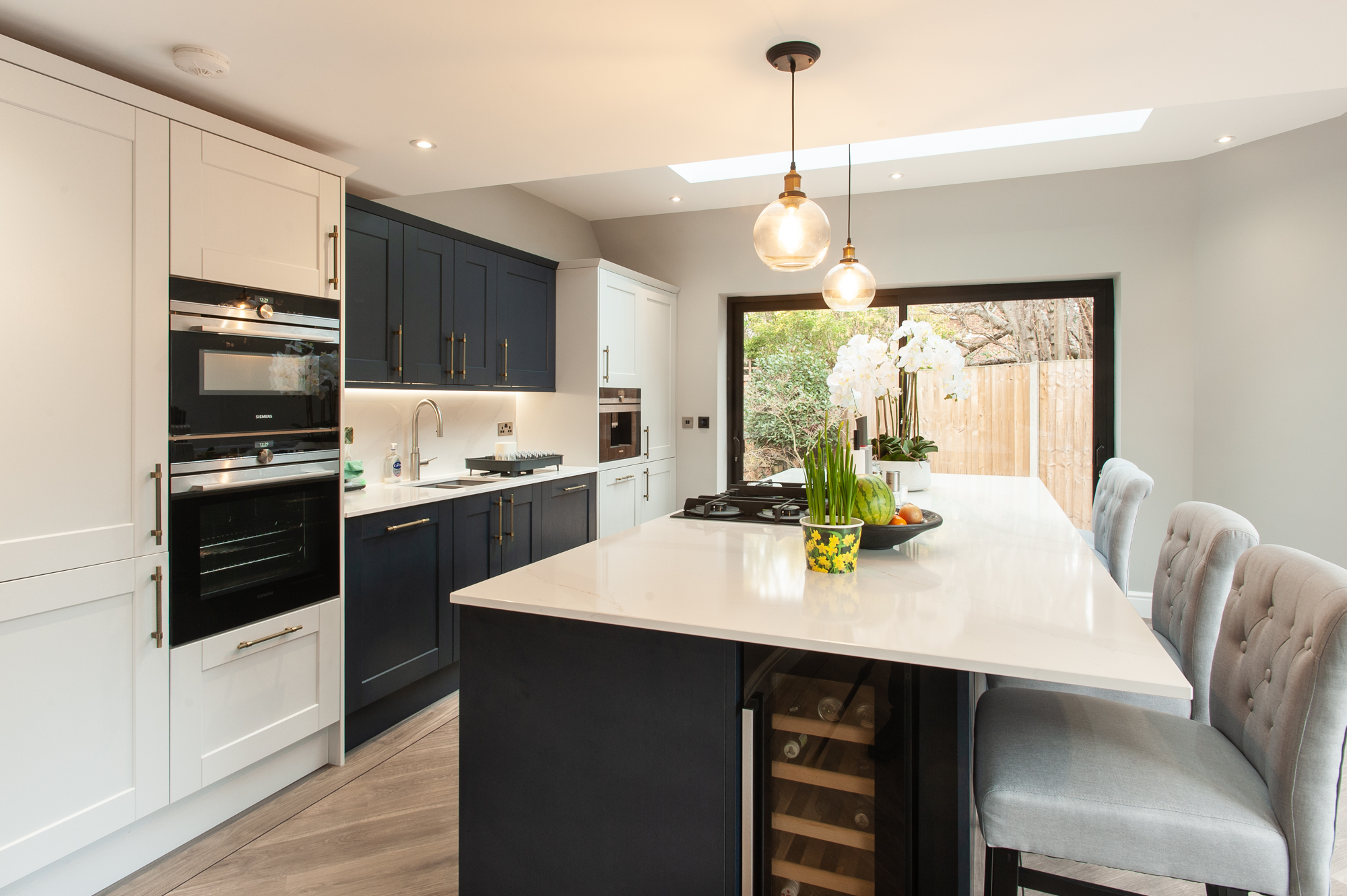Where kitchens were once small spaces to be concealed, people now love to have large, open cook spaces that form a family hub. Extending the kitchen to create a large family space is increasingly popular. It will also add value to the property.
The main purpose of the majority of projects is to create space and light. This can be achieved by redesigned the internal structure of the house and also by extending the house outwards. The key to success often rests on how effectively the existing part of the house – as much the extended part – can be opened up internally, as well as to the outside space.
1. Assess all your needs
A kitchen should always reflect the personality of the people who intend to use it. Ask yourself a few questions about how you wish to use the space. Will it be used to just prepare and cook dinners or are do you see a large area which is the hub of the home and dinner parties are a common site.
2. Plumbing and heating
If you are redesigning the kitchen will the sinks and appliances be moved around? If the kitchen is being completely overhauled you may require additional pipe work?
If the dream is to have a kitchen island containing a sink the plumbing and electricity will need to be in place before the flooring is laid.
Underfloor heating is a popular choice for kitchens as radiators can take up valuable space. Once again, this needs to be confirmed before laying the kitchen floor.
3. Consider lighting options
A larger kitchen will bring extra space and with it a need for a sensible lighting system. There will be occasions when independent parts of the kitchen will need to be lit differently and this should be considered in advance.
Consider your kitchen must-haves. Do you long for a statement island, lots of cupboards for storage or sleek worktops? Or are there some specific appliances that are a must have?
Every house will have its own way of life. This will create a different list of priorities which means no one kitchen is always the same. A good tip is to always write your desires and what you want the kitchen to achieve before you start. This will help tailor the space to your specific needs.
4. Be inspired
The look and feel of a kitchen is always a very personal choice. The importance of a kitchen has really been elevated over the last few decades. A fantastic tip is to collect images from online websites and magazine. Create mood boards and scrapbook.
Creating a list of surfaces, materials or accessories you’ve seen that work well together.
Don’t worry too much about cost at this point, just focus on things that inspire you, and soon you’ll be able to identify styles you are drawn to.
5. Set your budget
Always be honest about your budget. There are lots of tips and tricks that can be used to create savings and still achieve the look you desire. For instance, open shelving is less expensive than closed cupboards, or, low-level, pull-out storage may mean you need fewer wall units, which again can saves on cost.
It is easy to get carried away with kitchen gadgets when planning the room. Start small and build from there. Try and avoid getting sucked and only invest in things you think you’ll genuinely use.
Finally, a wise move would be to include a 10 per cent contingency fund, to cover any unexpected extra costs. In more case than not this will be needed and everyone one of those cases will have started out thinking “it won’t happen to me”.




